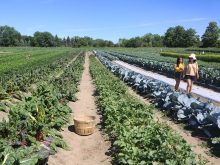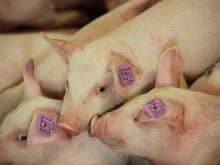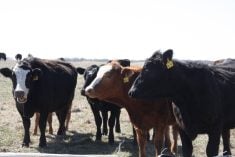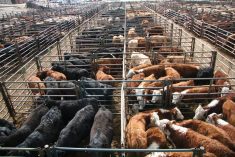Seeking healthier pigs
EDMONTON — Pork producers often find disease control is one of their largest costs of production, yet it is also one of the most difficult issues to manage.
Breeding more resilient pigs capable of handling various infections could be a tremendous saving to the swine industry and reduce the need for extensive antibiotic use, said Irene Wenger, a project manager with Genome Canada.
A four-year research project on disease resilience is underway and involves Genome Canada, swine breeding companies and six research institutes.
Read Also

VIDEO: Ag in Motion documentary launches second season
The second season of the the Western Producer’s documentary series about Ag in Motion launched Oct. 8.
Resilience is a combination of resistance and tolerance to disease where the animal has the ability to remain productive despite being sick.
The research involved exposing young barrows from high health facilities to various diseases in a barn to see how the animals fared.
About 1,000 pigs have gone through the program with ongoing growth performance and health status monitoring.
Some of the pigs get very sick while others remain healthy or experience only minor illnesses.
“There were pigs that were introduced to disease mixture in the barn and if they did get sick, they kept growing better than expected,” said Wenger.
“Those are the pigs we are most interested in learning more about,” she said at Livestock Gentec annual meeting held in Edmonton Oct. 18-19.
Fewer Sask. producers take price insurance
WHITEWOOD, Sask. — Fewer Saskatchewan producers bought livestock price insurance this year, but those who did are likely receiving payments.
Dale Ulmer with Sask. Crop Insurance Corp. told the Saskatchewan Cattlemen’s Association district meeting that 2,464 producers enrolled in 2016, representing about 96,000 calves or 12 percent of the calf crop.
That compares to about 15 percent of the calves in each of the last two years the pilot project has been running.
“Seven weeks into the claim period, we’ve paid out to the majority of the policies that were purchased this year,” he said.
The average payment is $100 per head.
In the feeder program, only about 700 head were covered.
Ulmer said the program is still a pilot but seems to be working.
“Since the inception of the program we’ve paid out nearly $7 million on calf policies, $617,000 on feeders and just less than $100,000 on the fed program,” he said.
Producers at the meeting offered advice to program administrators, such as being able to make claims on a smart phone.
Claims have to be made in the afternoon on specific days, but many said they aren’t near their computers then and would appreciate having a mobile phone option.
















